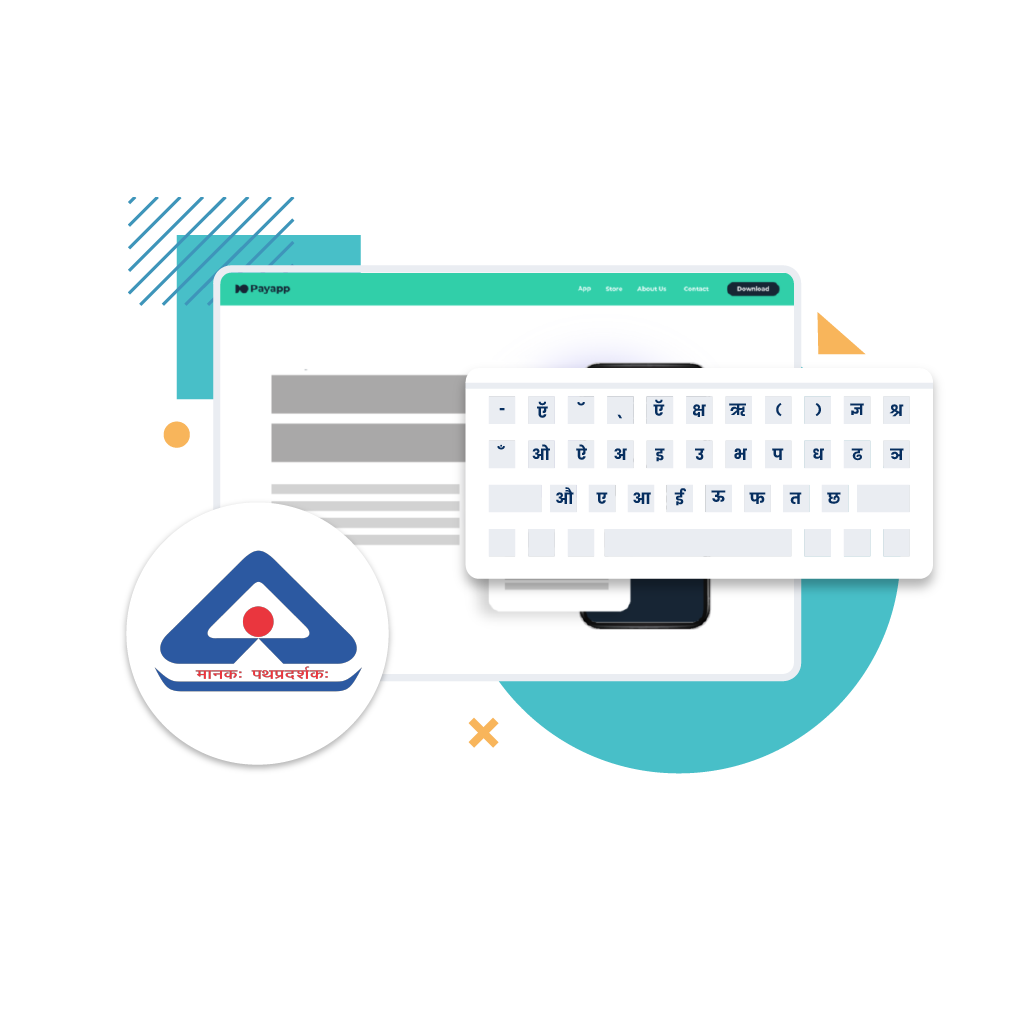Most websites are still limited to one language, leaving a significant portion of potential users unserved. A multi-language website allows businesses to reach audiences in their preferred language, making content clear, engaging, and actionable.
Beyond accessibility, it directly impacts user trust, engagement, and conversions.
From attracting new customers to improving search visibility and managing content efficiently, a multilingual website provides measurable advantages that single-language sites simply cannot.
In this blog, we’ll explore eight key benefits of having a multi-language website.
At a glance:
- A multi-language website goes beyond translation. It delivers content in users’ preferred languages to boost engagement, trust, and conversions.
- Expanding your reach matters. Multilingual content opens access to regional and underserved markets, allowing businesses to attract new audiences and increase revenue.
- User experience drives results. Websites in native languages reduce friction, enhance comprehension, and make navigation and checkout flows more intuitive.
- SEO and discoverability improve. Localised keywords, hreflang tags, and culturally relevant content help your website rank higher in regional search results.
- Scalability is achievable. Dedicated tools automate localisation, manage subdomains, provide analytics, and maintain quality across languages without disrupting site performance.
- Future-ready content pays off. Multilingual websites support mobile-first users, voice search, and emerging platforms, preparing your business for the next wave of digital engagement.
Key Benefits of a Multi-Language Website

Expanding your website into multiple languages goes beyond translation. It directly impacts how users interact with your brand, how search engines rank your content, and how efficiently your team can manage multilingual content. By approaching localisation strategically, businesses can unlock new audiences, boost engagement, increase conversions, and future-proof their digital presence.
Here are the key benefits that make a multi-language website an essential asset:
1. Expand Your Market Reach
A multi-language website opens doors to audiences that are often overlooked in single-language strategies. Users respond better when content is presented in their native language because it aligns with their expectations, regional terminology, and cultural context.
This level of localisation can significantly improve engagement and conversion in linguistically diverse markets such as India, Southeast Asia, and Latin America.
Effective expansion requires more than literal translation. High-impact localisation considers:
- Regional dialects and idiomatic expressions: Content that reads naturally in the local language builds trust and credibility.
- Cultural context for offerings: Product descriptions, images, and even navigation elements may need adjustment to match local user behaviour.
- Localised SEO: Keyword strategies and search intent vary by region. Properly localised content improves visibility on regional search engines.
By approaching localisation strategically, businesses can reach untapped markets, improve engagement, and convert audiences who would otherwise remain inaccessible.
2. Improve User Experience and Engagement
Browsing a website in a familiar language makes interactions intuitive and friction-free. Users process information faster, understand product offerings more clearly, and are more confident in their decisions. This is especially critical for markets with low English proficiency, where a lack of language accessibility can directly drive users away.
High-level localisation goes beyond translation by optimising the tone, layout, and flow of content to match regional reading habits. For example:
- Navigation and calls-to-action: Placing CTAs in culturally familiar language patterns increases clicks and conversions.
- Content structure: Certain languages prefer shorter paragraphs, visual cues, or reordered information to enhance comprehension.
- Trust signals: Localised payment instructions, return policies, and contact information build credibility with regional audiences.
A multi-language website ensures every visitor has a smooth, culturally aligned experience, which directly translates into higher engagement and stronger user relationships.
3. Increase Conversions and Sales
Conversions are driven by clarity and relevance. When content speaks the user’s language and aligns with local cultural expectations, visitors understand product offerings faster, feel more confident, and are more likely to complete a purchase. Subtle details such as regional phrasing, familiar measurement units, and culturally appropriate imagery can have a significant impact on buying decisions.
Effective localisation also extends to the entire user journey, not just product descriptions:
- Checkout process: Translating form fields, instructions, and error messages reduces friction and cart abandonment.
- Trust elements: Localised payment options, warranty details, and customer support information reassure users and improve confidence.
- Promotions and offers: Tailoring campaigns to local festivals, holidays, and buying behaviours increases responsiveness and engagement.
By making every interaction culturally and linguistically relevant, you can turn more visitors into paying customers, unlocking revenue opportunities that single-language websites often miss.
4. Optimise for Global SEO
A multi-language website gives your business an edge in search visibility by aligning content with how users search in different languages. Search engines prioritise websites that serve region-specific content, making localisation a critical factor for organic reach.
Key technical and strategic considerations include:
- Hreflang tags: These inform search engines about language and regional targeting, preventing duplicate content issues and improving regional ranking.
- Localised keywords: Translating keywords is not enough. Identifying search intent and high-traffic terms in each language ensures content reaches the right audience.
- Content structure and metadata: Titles, meta descriptions, and URLs must be adapted for local language conventions to maximise click-through rates.
Optimising for regional SEO ensures a multilingual website reaches the right audience efficiently, driving higher-quality traffic and better business outcomes.
5. Gain an Edge Over Competitors
A multi-language website sets your brand apart in markets where competitors operate only in one language. Businesses that invest in localisation early can capture audience attention and loyalty before others adapt, establishing a stronger foothold in regional markets.
Effective localisation goes beyond language and considers cultural relevance, user behaviour, and market-specific preferences. This approach signals to users that your brand understands their needs and values their experience, which builds credibility and trust.
Investing in a multilingual website is not just a technical upgrade. It is a strategic move that positions your business ahead of competitors and strengthens long-term market presence.
6. Promote Accessibility and Inclusion
A multi-language website makes content accessible to users from diverse linguistic backgrounds. In regions with multiple languages, a significant portion of potential users may not be proficient in the primary language of your site. Providing content in their preferred language removes barriers and ensures that information and services are available to everyone.
Key advantages include:
- Reach underserved audiences: Users who might otherwise be excluded can access critical information and services.
- Enhance engagement and trust: When content feels native, users are more likely to interact, return, and recommend your brand.
- Align with social responsibility: Multilingual accessibility reflects a commitment to inclusion, digital equity, and cultural sensitivity.
By making content accessible across languages, businesses not only broaden their reach but also strengthen user relationships and brand credibility.
7. Cater to Mobile, Voice, and Emerging Platforms
Users increasingly access websites via mobile devices and voice-driven interfaces, especially in regional language markets. Multilingual content ensures these interactions are seamless, providing a natural and intuitive experience regardless of platform.
Key considerations include:
- Mobile-first experience: Content optimised in regional languages improves readability and navigation on small screens, reducing drop-offs.
- Voice search readiness: Voice assistants and smart devices are commonly used in local languages. Translating content ensures your website is discoverable via voice queries.
- Future-proofing: As new digital interaction methods emerge, such as chatbots, voice apps, and IoT interfaces, having multilingual content positions your website to serve these channels effectively.
By catering to mobile, voice, and emerging platforms, a multi-language website not only meets current user expectations but also prepares your business for the next wave of digital engagement.
8. Streamline Content Management and Scalability
Managing multiple languages can become complex without the right tools. Platforms like Anuvadak simplify the process, allowing businesses to maintain high-quality multilingual content while scaling efficiently.
Key advantages include:
- Automated localisation: New content is detected, translated, and updated automatically, eliminating manual effort and reducing errors.
- Zero downtime updates: Continuous localisation ensures that updates on the source website are reflected across all languages without interrupting the user experience.
- Analytics-driven insights: Track translation progress, language performance, and user engagement to make informed decisions and optimise content strategy.
- Centralised management: Easily manage multiple subdomains, content versions, and language-specific settings from a single platform, reducing operational complexity.
By streamlining content management, companies can scale their websites into new markets without sacrificing quality or speed.
How to Make Your Website Multilingual: A Step-by-Step Guide

Expanding your website into multiple languages requires more than translation. A systematic approach ensures content quality, cultural relevance, and scalability. Here’s a practical guide to get started:
1. Identify Target Languages and Regions
Before translating content, research your audience and prioritise languages based on user demographics, market potential, and search behaviour. Focus on regions where a significant portion of users prefer native-language content.
2. Plan Content Strategy and Structure
Decide which pages, product descriptions, blogs, and user flows should be localised. Consider:
- Content hierarchy and navigation for each language
- Culturally appropriate imagery, examples, and tone
- Language-specific SEO keywords
3. Choose the Right Localisation Tool
Manual translation can be time-consuming and error-prone. Platforms like Anuvadak automate website localisation, ensuring consistent quality while saving time.
Key features include:
- Automated Website Translation: Detects and translates new content automatically across languages.
- Continuous Localisation with Zero Downtime: Updates all localised pages without affecting site availability.
- CMS Compatibility and Subdomain Management: Integrates with any CMS and manages multilingual subdomains effortlessly.
- Centralised Project Management: Oversee all localisation tasks from a single dashboard.
- Analytics and Insights: Track translation progress, language performance, and user engagement.
- Scalability for Business Growth: Expand into new regions and languages efficiently.
- Security and Data Protection: Protects corporate data with advanced encryption and privacy protocols.
4. Optimise for Mobile and Voice
Ensure content is mobile-friendly and structured for voice search queries in regional languages. Optimise navigation, headings, and metadata for smaller screens and voice interfaces.
5. Implement Regional SEO Best Practices
Use hreflang tags, local keywords, and localised metadata to improve search visibility. Proper SEO ensures that each language version reaches the right audience in search engines.
6. Test and Review Content
Have native speakers review translations to ensure accuracy, cultural relevance, and readability. Testing should include navigation, forms, checkout flows, and multimedia content.
7. Monitor Performance and Iterate
Track engagement metrics, conversion rates, and user feedback for each language. Use insights to refine content, improve user experience, and prioritise updates in high-impact regions.
Wrapping Up
A multi-language website is a strategic asset that drives growth, engagement, and accessibility. Expanding your market reach, improving user experience, increasing conversions, and preparing for mobile and voice platforms all contribute to stronger business outcomes.
Platforms like Anuvadak simplify this process by providing automated localisation, centralized management, and actionable insights, helping businesses scale efficiently while maintaining high-quality multilingual content.
Bring your website to audiences across languages. Request a demo of Anuvadak today and see how effortless multilingual website management can be.
Faqs
1. What is a multi-language website?
A multi-language website is one that offers content in more than one language, allowing users from different linguistic backgrounds to access information in their preferred language.
2. Why is having a multi-language website important?
A multi-language website helps businesses reach wider audiences, improve user engagement, boost conversions, and perform better in regional search results.
3. How do I make my website multi-language?
You can make your website multi-language by identifying target languages, planning content structure, using localisation tools like Anuvadak, optimising for mobile and SEO, and continuously monitoring performance.
4. Does multi-language content improve SEO?
Yes, localised content with regional keywords and proper hreflang implementation improves visibility in search engines and drives organic traffic from diverse regions.
5. How many languages should I add to my website?
Start with languages that align with your target audience and market potential. You can expand gradually as you analyse engagement and growth opportunities.

